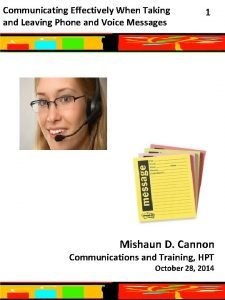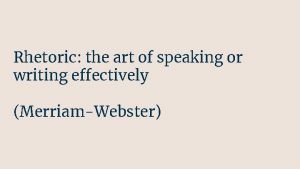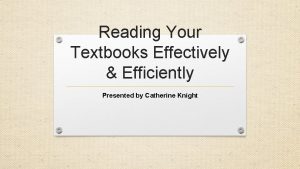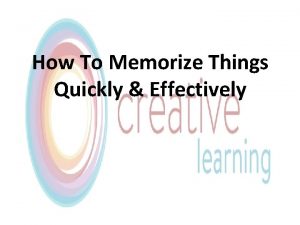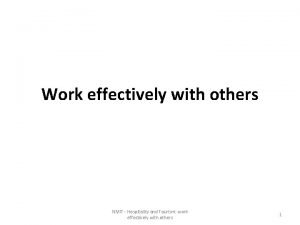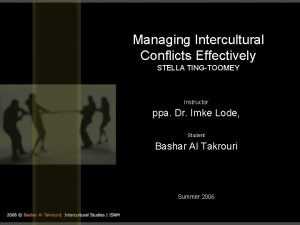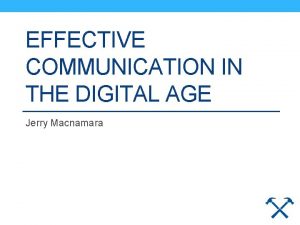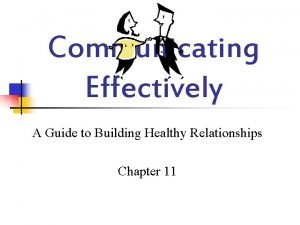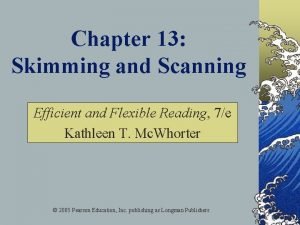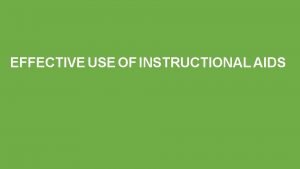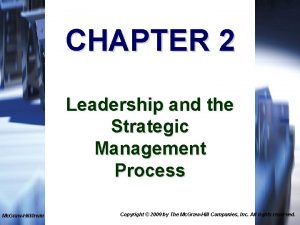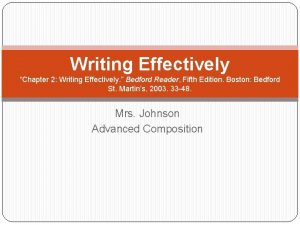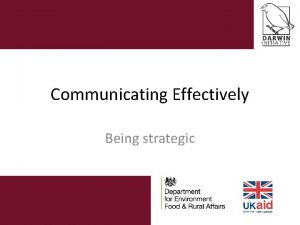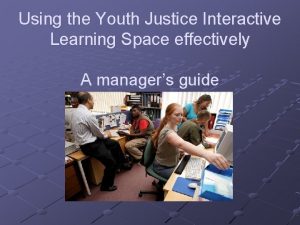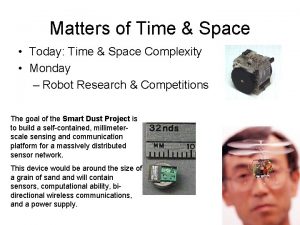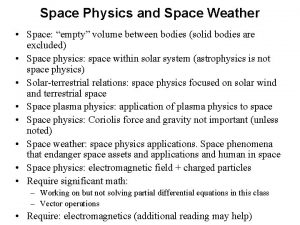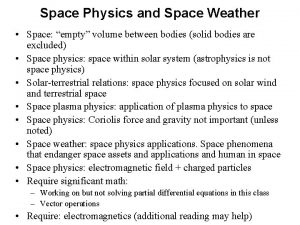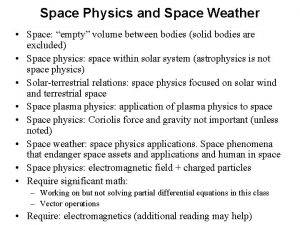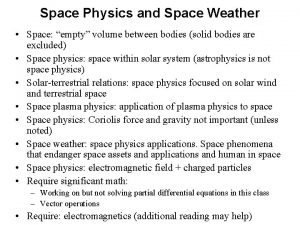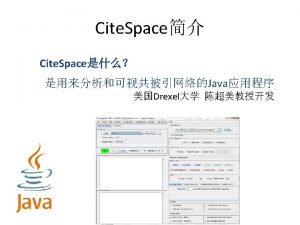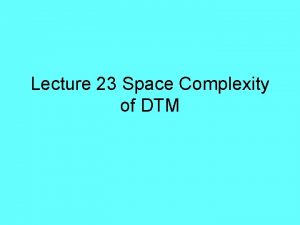Chapter 2 Using Time and Space Effectively Time
































- Slides: 32

Chapter 2 Using Time and Space Effectively

Time is precious and irreplaceable: “All my possessions for a moment of time. ” Queen Elizabeth I on her deathbed Copyright © Houghton Mifflin Company. All rights reserved. 2|2

Ways to gain extra time • Reclaim lost time • Stick to a schedule • Stay organized Copyright © Houghton Mifflin Company. All rights reserved. 2|3

Reclaiming lost time • Pinpoint areas of “hidden” time • Cultivate time-saving habits Copyright © Houghton Mifflin Company. All rights reserved. 2|4

Ways to find “hidden” time • • • Carry pocket work Use your mind when it’s free Record study information Employ spare-time thinking Use your subconscious Copyright © Houghton Mifflin Company. All rights reserved. 2|5

Changing your time habits • • • Defy Parkinson’s Law Obey your alarm clock Limit e-mail and Internet time Take “time out” Listen to your body Copyright © Houghton Mifflin Company. All rights reserved. 2|6

Sticking to a schedule • • • Provides greater control Encourages relaxation Saves time Provides freedom Increases flexibility Copyright © Houghton Mifflin Company. All rights reserved. 2|7

Dividing time in to blocks • Makes tasks more manageable • Helps you work at peak efficiency Copyright © Houghton Mifflin Company. All rights reserved. 2|8

Tips for time blocks • Don’t waste big blocks • Study during prime time • Study before recitation classes and after lecture classes • Don’t let details tie your hands • Include nonacademic activities Copyright © Houghton Mifflin Company. All rights reserved. 2|9

The three-part scheduling plan • The master schedule • The weekly schedule • The daily schedule Copyright © Houghton Mifflin Company. All rights reserved. 2 | 10

Use a taskbased schedule when • Your days are unpredictable • Your free time is fluid Copyright © Houghton Mifflin Company. All rights reserved. 2 | 11

Standard time schedules • Divide time into blocks Copyright © Houghton Mifflin Company. All rights reserved. 2 | 12

Task-based schedules • Divide goals into subgoals Copyright © Houghton Mifflin Company. All rights reserved. 2 | 13

Task-based master schedule • A series of long term goals divided into manageable subgoals Copyright © Houghton Mifflin Company. All rights reserved. 2 | 14

Assignmentoriented weekly schedule • Used for shorter assignments that span a week or less Copyright © Houghton Mifflin Company. All rights reserved. 2 | 15

Daily task-based schedule • Basically a to do list Copyright © Houghton Mifflin Company. All rights reserved. 2 | 16

Efficiency vs. Effectiveness • Schedules can provide a false sense of security if they’re filled with low-priority tasks • The Urgency-Importance Matrix helps to clarify priorities Copyright © Houghton Mifflin Company. All rights reserved. 2 | 17

The Urgency-Importance Matrix Copyright © Houghton Mifflin Company. All rights reserved. 2 | 18

Interruptions are often urgent but not important • Phone calls • Unexpected visitors • E-mail Copyright © Houghton Mifflin Company. All rights reserved. 2 | 19

Busywork is usually not urgent and not important • Straightening desk • Sharpening pencils • Checking e-mail excessively Copyright © Houghton Mifflin Company. All rights reserved. 2 | 20

Tasks that are both urgent and important take top priority and should not be ignored • Scheduled classes • Looming deadlines • Emergencies or dangers Copyright © Houghton Mifflin Company. All rights reserved. 2 | 21

The most valuable tasks are not urgent but important • Mastering your notes • Beginning work on a long-term assignment Copyright © Houghton Mifflin Company. All rights reserved. 2 | 22

Using the matrix to plan your time • Tackle tasks in quadrant 1 first but try to keep them to a minimum • Spend the bulk of your time in quadrant 2 • Minimize tasks in quadrant 3 by finding a study environment where interruptions are rare • Try to keep tasks from quadrant 4 off of your to do list. Copyright © Houghton Mifflin Company. All rights reserved. 2 | 23

How to stay organized • Devise a system • Keep it flexible • Minimize clutter Copyright © Houghton Mifflin Company. All rights reserved. 2 | 24

Principles for a system of organization • Find a place for everything • Arrange your work materials intelligently • Label items logically Copyright © Houghton Mifflin Company. All rights reserved. 2 | 25

Finding a place for everything • Divide your materials into basic groups: textbooks, notebooks, pens, mail, etc. • Find a specific place for each basic group: shelves, draws, jars, inbox • Go back and subdivide these groups: Math and science books on one shelf, history and language on another. Copyright © Houghton Mifflin Company. All rights reserved. 2 | 26

Organizing things intelligently with the CIA system • Current. Keep things you’re working on right now close at hand • Imminent. Keep things you plan to work on nearby but not in your way • Archived. Label seldom-used materials and then store them away Copyright © Houghton Mifflin Company. All rights reserved. 2 | 27

Labels help you to locate things quickly • Label folders or directories according to the course identifier • Use separate labeled folders for different parts of a class • Include enough information on each page or file so it can stand alone • Provide an index for file folders Copyright © Houghton Mifflin Company. All rights reserved. 2 | 28

The problem with inflexible organization • Too rigid and demanding • Too complicated Copyright © Houghton Mifflin Company. All rights reserved. 2 | 29

Keeping things flexible • Use loose-leaf paper: Easier to shift around and rearrange • Use a different notebook per class: Lets you take only what you need Copyright © Houghton Mifflin Company. All rights reserved. 2 | 30

Minimizing clutter • Use the OHIO rule for papers and e-mail • Don’t print out files if you don’t need to • Allow time for cleanup and setup Copyright © Houghton Mifflin Company. All rights reserved. 2 | 31

If time-saving seems uninspiring, ask yourself this: • What am I saving time for? Copyright © Houghton Mifflin Company. All rights reserved. 2 | 32
 What is the study or art of using language effectively?
What is the study or art of using language effectively? The art of the effective use of language
The art of the effective use of language Short voicemail greetings personal
Short voicemail greetings personal The art of writing or speaking effectively
The art of writing or speaking effectively The art of speaking or writing effectively is
The art of speaking or writing effectively is The art of speaking or writing effectively
The art of speaking or writing effectively Reading effectively and efficiently
Reading effectively and efficiently How to memorize quickly and effectively
How to memorize quickly and effectively Joint space vs cartesian space
Joint space vs cartesian space Space junk the space age began
Space junk the space age began Camera space to world space
Camera space to world space Unscented trajectory chapter 5
Unscented trajectory chapter 5 World space computer
World space computer Start time end time and elapsed time
Start time end time and elapsed time Synoptic scale motion
Synoptic scale motion Working effectively with others
Working effectively with others How to use twitter effectively for business
How to use twitter effectively for business Working effectively as a parent association
Working effectively as a parent association Managing intercultural conflict effectively
Managing intercultural conflict effectively Quotation burger
Quotation burger Effective communication in the digital age
Effective communication in the digital age Effectively communicate meaning
Effectively communicate meaning Healthy relationships communicating effectively
Healthy relationships communicating effectively What will general-purpose detergents effectively remove?
What will general-purpose detergents effectively remove? Training managers to communicate effectively
Training managers to communicate effectively How to learn languages effectively
How to learn languages effectively Teaching grammar
Teaching grammar Ways to address grammar in the writing classroom ppt
Ways to address grammar in the writing classroom ppt How to revise effectively
How to revise effectively Persons in lpscs careers must effectively communicate with
Persons in lpscs careers must effectively communicate with What is overview skimming
What is overview skimming Instructional aid examples
Instructional aid examples An effectively worded strategic vision statement is
An effectively worded strategic vision statement is


